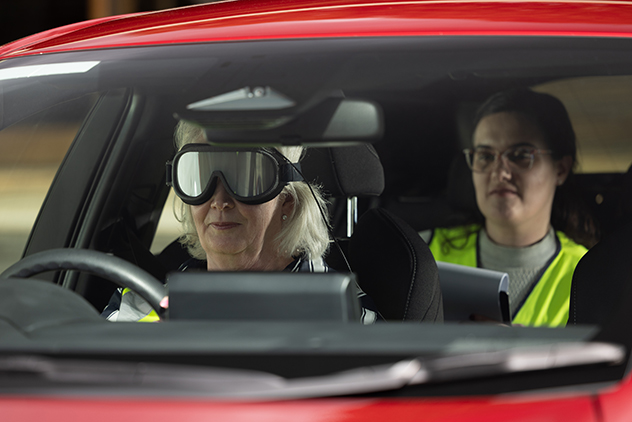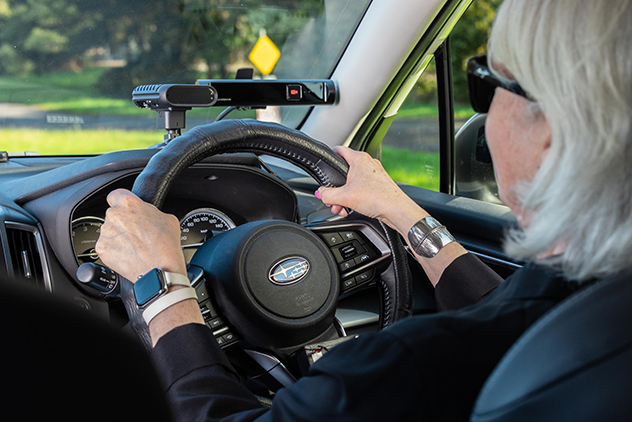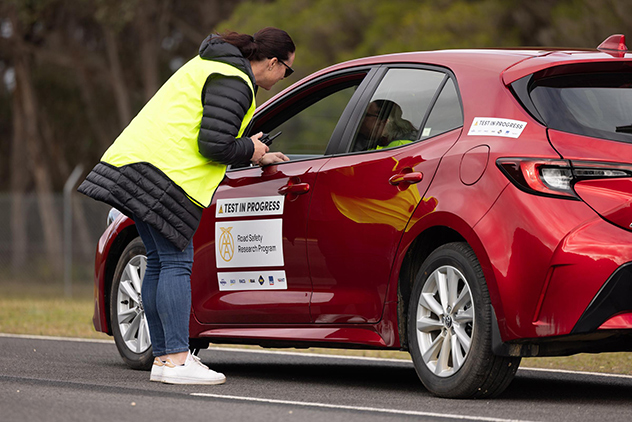The best safety systems to prevent driver fatigue

A test for sleepiness before setting out and cameras that detect eyelid closure are the two best ways to avoid fatigue-related crashes, according to a new report.
Under the auspices of the Australian Automobile Association’s Road Safety Research Program, Monash University, the Institute for Breathing and Sleep at Austin Hospital in Victoria, and the Appleton Institute at Central Queensland University, compared several monitoring technologies that detect and warn drivers of fatigue, as well as driver responses to these warnings and alerts.
Study 1 (Monash) assessed fatigued driving monitoring devices on a controlled track to see how well they predicted ‘end-state fatigue’ (e.g., near-crash events), while Study 2 (IBAS) assessed the use of warning/alert systems by drivers on public roads. Study 3 (CQU) examined the usability and acceptance of devices based on the experience of existing users, while Study 4 (CQU) developed an evaluation framework for fatigued driving monitoring devices/systems.
Sleepiness tests and eye-tracking cameras
The predictive technology PVT WorkFit, which employs the Psychomotor Vigilance Task to measure sleepiness, proved among the most effective methods to combat fatigue-related incidents. The test, administered on an iPad, takes just three minutes, yet a failed test was associated with around nine more lane deviations on the subsequent drive and up to 24 more near-crash events, suggesting PTV WorkFit is quick and accurate way to measure fitness to drive.
‘Ocular’ technologies, which monitor the driver for signs of fatigue on the road, were also shown to be effective. The Guardian system from Seeing Machines, which recognises eyelid closure, was shown to be “highly effective” in detecting fatigue. Results indicated it was sensitive to signs of both sleep deprivation and driving impairment, and a single alarm from the system was associated with drivers being six times more likely to demonstrate mild impairment (a single lane deviation in a five-minute period), 19 times more likely to have in moderate impairment (two lane deviations) and 27 times more likely to exhibit severe impairment (a near crash event within five minutes).

The study also tested Subaru’s native ‘Driver Focus’ system. It detected approximately 10 per cent of severe driving impairment events (with a near-crash event 16 times more likely each time its alarm sounded), but it had a false alarm rate of 33 per cent and did not detect signs of mild and moderate fatigue.

Non-camera-based systems performed less favourably than ocular systems. CardioID’s CardioWheel, which detects the driver’s biometrics through the steering wheel, was “associated with excessive data loss (due to constant changes in hand position on the steering wheel) resulting in no heart-rate-based fatigue alarms being generated throughout the study, despite driving impairment being evident”.
Effectiveness of fatigue detection technologies in real-world driving
A driver’s willingness to use fatigue detection technologies (FDT) and the way the system alerts the driver are key components in overall effectiveness. The study employed a randomised controlled trial of fleet drivers, designed to test whether an alarm from a fatigue detection technology effectively reduced adverse events – in other words, did an alarm improve driver safety, relative to no alarm. It assessed the Optalert and Guardian systems.
Using Optalert with alarms while driving led to a more than 50 per cent reduction in critical drowsiness events, with a similar reduction in the frequency of hazardous harsh braking events. By comparison, there was no improvement in drowsiness or hazardous driving events when a car’s native lane departure warning was turned on. Although drivers were not instructed to manage fatigue as part of the project, the Optalert drowsiness alarms saw drivers choosing to nap more often. Importantly, acceptance of the device was good, with most drivers believing they were better at identifying fatigue and better equipped to manage fatigue thanks to the technology.

The Guardian alarms were associated with a 55 per cent reduction in fatigue events, alongside a 48 per cent reduction in hard braking and 34 per cent drop in hard cornering. Additionally, Guardian alarms were associated with a slight increase in caffeine consumption during work shifts and a slight reduction in subjective sleepiness ratings at the end of the shift. After using the Guardian system, drivers felt less concerned regarding privacy and reported less discomfort than expected, but the technology was rated as a greater hinderance than originally thought.
Despite concerns about the various technologies’ accuracy and driver privacy, the study indicated most individuals and organisations were able to adapt to the use of fatigue detection devices.
The importance of driver training for fatigue detection technology
“Good communication enhances drivers’ understanding of the fatigue detection technology, gives them a sense of ownership, and addresses concerns they may have about privacy and data security,” says NRMA Corporate Driver Training manager, Darrin Tucker.
Driver support was optimised when drivers were provided with:
• An extended consultation period.
• Standalone training or inductions.
• Clear guidance on how to use the FDT.
• Clear information on the FDT’s limitations (particularly concerning use of the data).
• Information on how in-vehicle camera technologies can improve safety, and assurance that they are not intended as a form of surveillance.
Fatigue remains a major problem for road safety in Australia. It is estimated one in five crashes involves fatigue, and crashes due to fatigue are more likely to result in fatal or serious injury for the driver and occupants.
— Transport NSW
From a Driver Training viewpoint, we would always want to acknowledge benefit of Driver Training to businesses, therefore any edit of this recommendation in the report would be advantageous to our Driver training offering in the market.
NRMA Corporate Driver Training can provide this type of training to any business type.
Improving adoption of Fatigue Detection Technology
Implement training
Training on the benefits of the FDT and how to use it will be a crucial step in a smooth implementation. Training should be made available to all staff who will interact with the FDT; this may require a range of different training methods to ensure appropriate support for the end users. This can include:
• General training on fatigue and fatigue driving.
• Walk through demonstrations and workshops to explain the FDT and how it works.
• Dedicated hands-on training sessions to allow users to interact with the FDT before implementation to fully understand the system’s functionality.
• Provision of self-guided learning materials.
• Planned post-implementation refresher training.
"A comprehensive training package can help to create a safe and supportive environment that empowers employees to learn and test the FDT without fear of repercussions or judgement. Enabling two-way feedback (between trainers and employees) will also foster a culture of continuous improvement for the implementation process.” says Darrin.
Fatigue can be difficult to detect and easily dismissed when driving. One of the many affects of driving fatigued is slow to no reaction, so be proactive.
Fatigue prevention tips for safer driving:
- Break: 15 minutes every 2 hours
- Eat: Light fresh food and keep hydrated
- Exercise: During break; move, stretch and walk
- Plan: Think ahead, plan your trip and rest breaks
- Sleep: Ensure adequate restful sleep prior to driving






